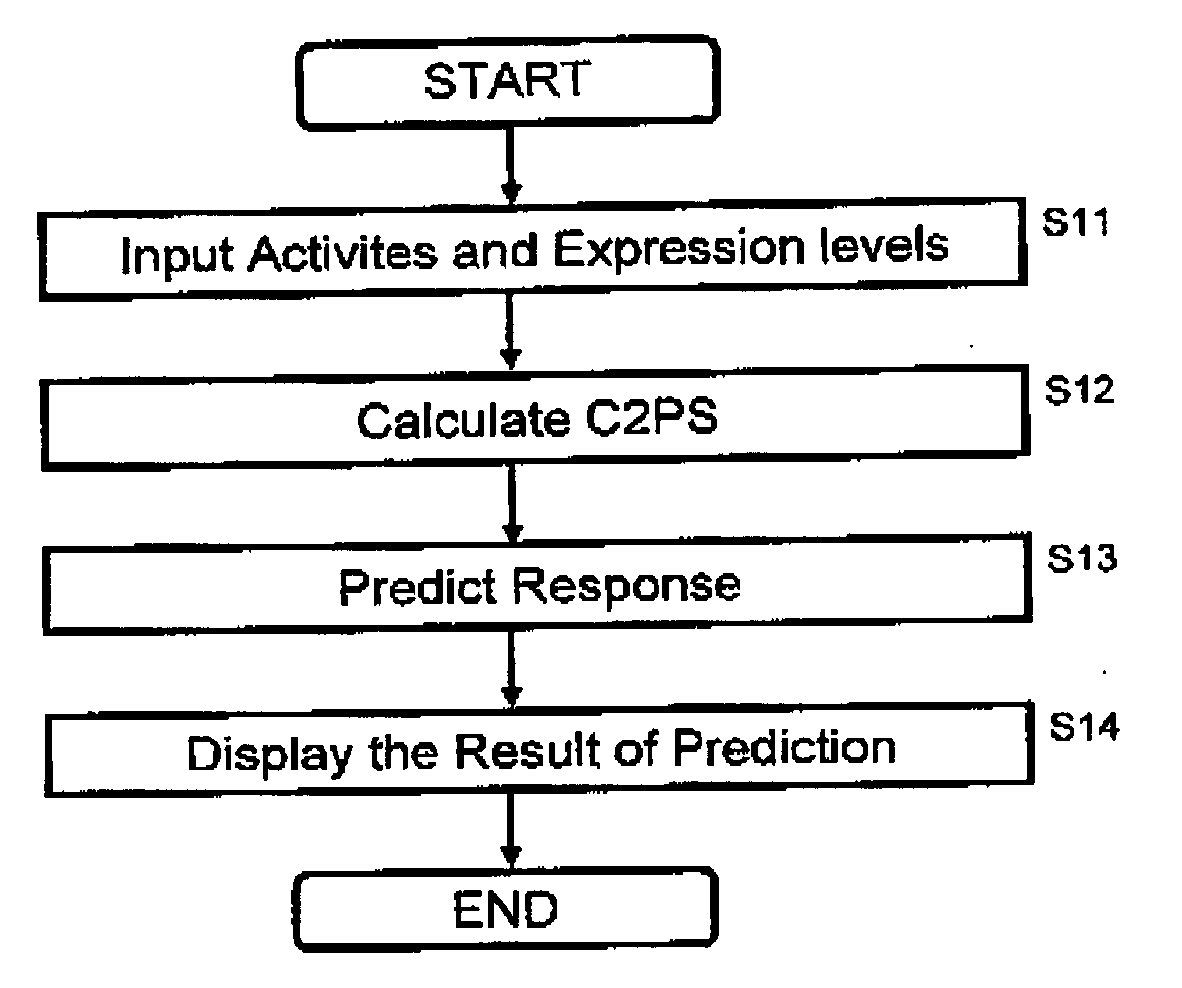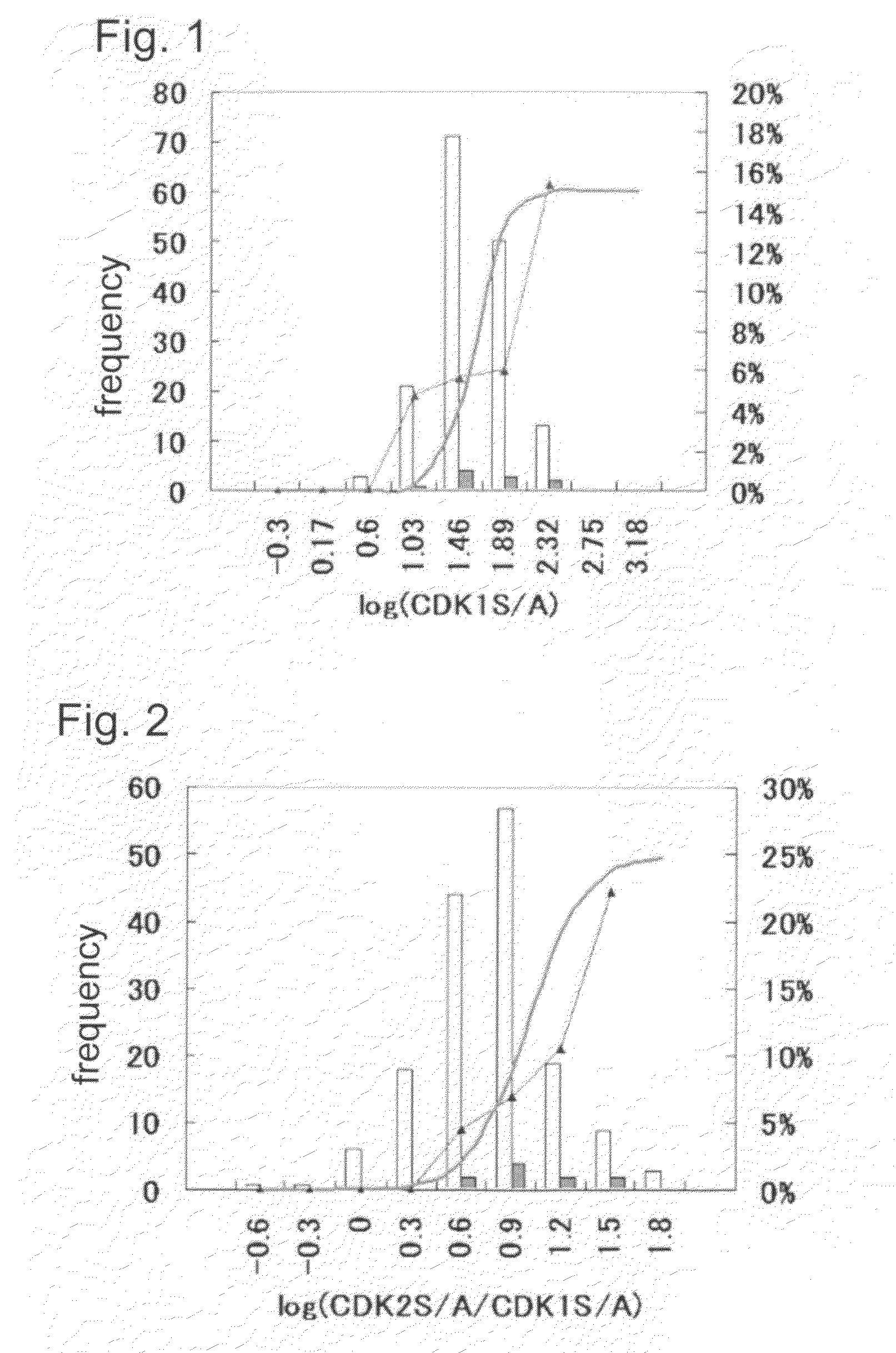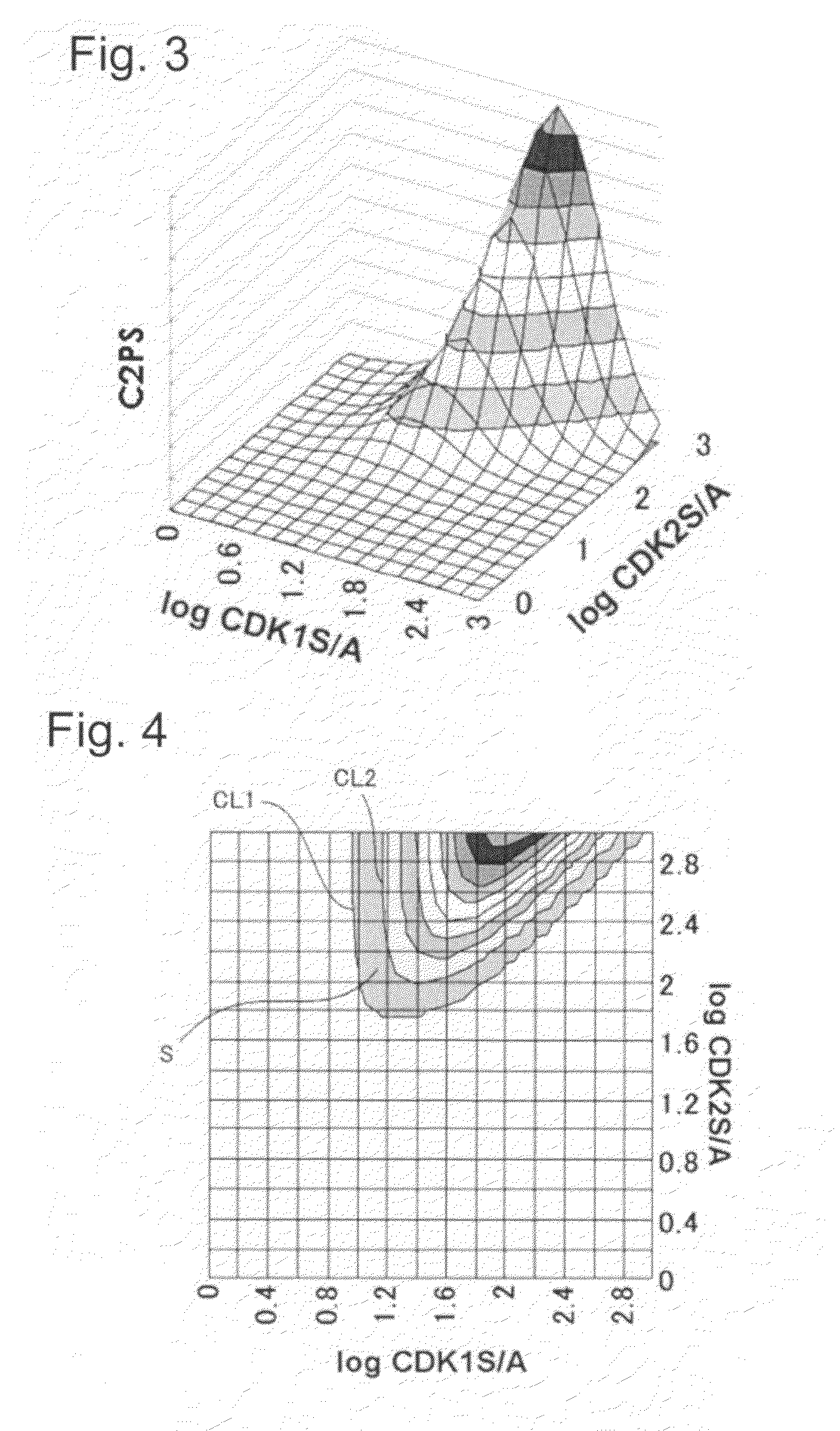Method for predicting response of cancer patient to anticancer drug treatment
a cancer patient and anticancer technology, applied in the field of predicting the response of a cancer patient to anticancer drugs as, can solve problems such as patients' suffering, and achieve the effect of avoiding unnecessary treatment and facilitating prediction
- Summary
- Abstract
- Description
- Claims
- Application Information
AI Technical Summary
Benefits of technology
Problems solved by technology
Method used
Image
Examples
Embodiment Construction
[0022]Inventors find that a disease outcome can be predicted in the basis of a cell cycle profile score obtained by analyzing a tumor of patient. The disease outcome includes a complete response, a partial response, stable disease, no response, and time to progression of disease as patient's response to anticancer drug therapy. The cell cycle profile score is obtained based on the relationship between CDK1 specific activity and CDK2 specific activity in the tumor sampled from the cancer patient. Here, CDK1 specific activity represents CDK1 activity value / CDK1 expression level, and CDK2 specific activity represents CDK2 activity value / CDK2 expression level. CDK specific activity is a parameter reflecting CDK enzyme activity per unit CDK protein amount contained in a sample, is equivalent to, of CDKs present in the cell, ratio of CDK1 showing activity, and represents CDK activity level based on proliferative state of malignant tumor cells which are judgment object.
[0023]Above-mentione...
PUM
| Property | Measurement | Unit |
|---|---|---|
| reduction rate | aaaaa | aaaaa |
| frequency | aaaaa | aaaaa |
| fluorescence | aaaaa | aaaaa |
Abstract
Description
Claims
Application Information
 Login to View More
Login to View More - R&D Engineer
- R&D Manager
- IP Professional
- Industry Leading Data Capabilities
- Powerful AI technology
- Patent DNA Extraction
Browse by: Latest US Patents, China's latest patents, Technical Efficacy Thesaurus, Application Domain, Technology Topic, Popular Technical Reports.
© 2024 PatSnap. All rights reserved.Legal|Privacy policy|Modern Slavery Act Transparency Statement|Sitemap|About US| Contact US: help@patsnap.com










